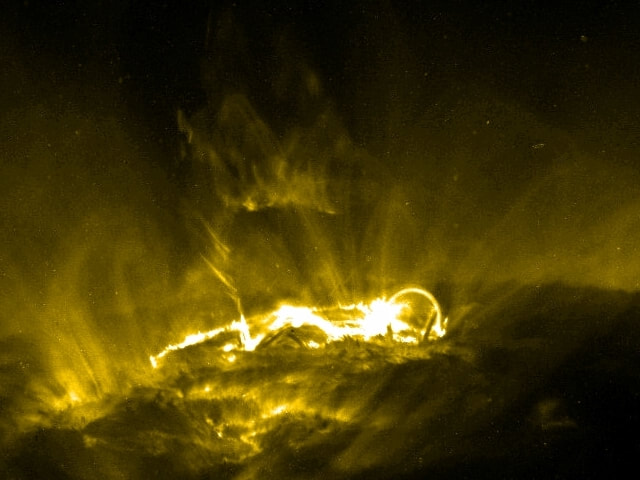Solar flares are the most energetic events observed on the Sun and they are lethal to unshielded life and space hardware. Fortunately, we are substantially protected by the Earth’s magnetosphere.
(*) To put this in context, the lower limit here is approx. ten thousand times greater than the total energy that would be released by the detonation of a 12-warhead Trident-II nuclear missile weapon.
The most widely used system for the classification of flares is based upon their maximum radiative output (flux) within the range 1Å to 8Å (which is in the X-Ray part of the spectrum). Five categories are used: A, B, C, M, X, in order of increasing peak X-ray flux.
Flares have three stages of evolution. The precursor stage where soft (lower energy) X-rays are produced and emitted is followed rapidly, typically less than five minutes, by the impulsive stage.
This stage is very short lived, less than a minute, when atomic particles (predominately protons, electrons and photons) are energised up to many MeV (Million electron-Volts). Baryonic matter (protons and electrons) is accelerated to high speed (typically from 100 km/s to >600 km/s). At these speeds the plasma (as well as the high energy photons electromagnetic radiation; i.e. the X-Ray and Gamma ray in the more energetic X classes) has sufficient speed to escape from the gravitational field (attraction) of the Sun.
The decay, or sometimes referred to as the gradual phase lasts between 10 to 20 minutes with radiation emissions gradually reducing over this period; with the higher frequency (energy) radiation falling off quicker than the relatively lower frequency radiation. Loop prominences are frequently seen in the region of the flare after the flare has subsided.
The source of energy within flares is considered to be magnetic forces; specifically the conversion of magnetic force into kinetic energy. This can result from magnetic reconnection, where magnetic flux lines interact and sever and reform. The reason why the flux lines interact is due to the stresses and pressures (shear) exerted on the field lines by the convection flow of material within the convection zone. These stresses allow a build-up of magnetic energy which is released explosively during the flare.
This simplified description belies the very detailed researches currently ongoing into 3-dimensional magnetic reconnection and a comprehensive explanation for how and why particles are accelerated to such high energies and speeds is still being determined.


